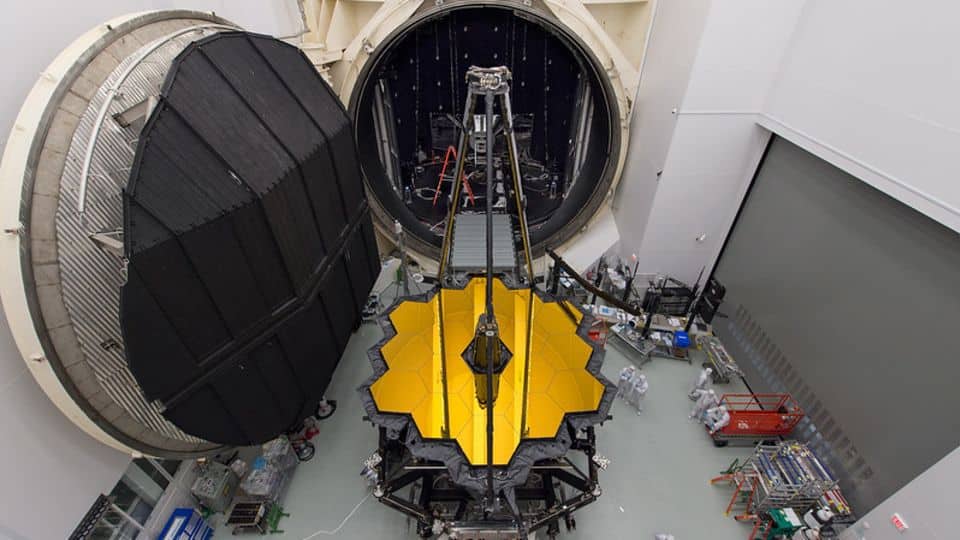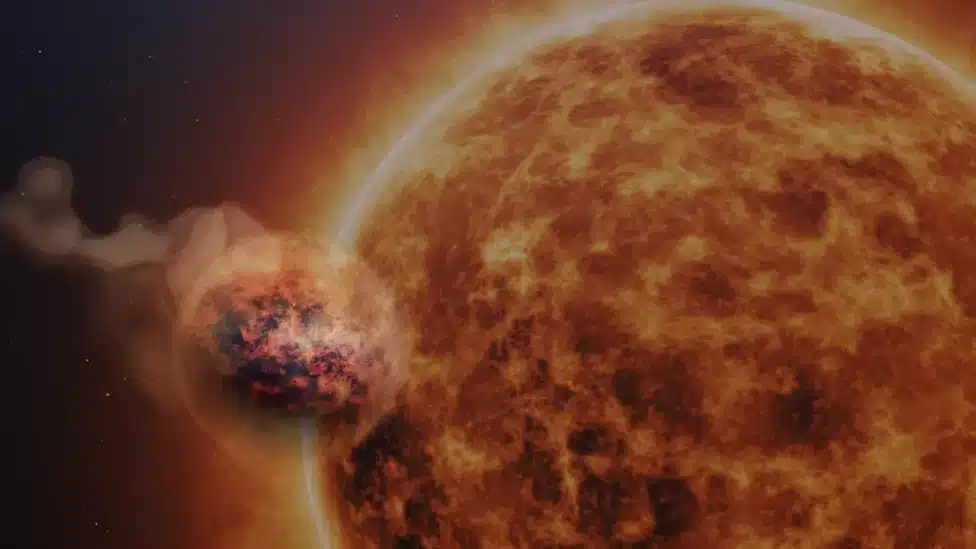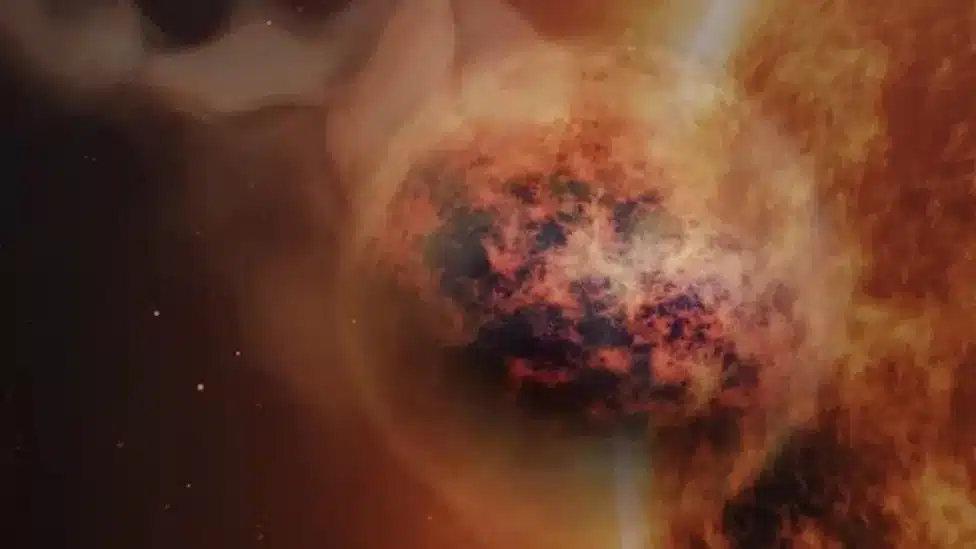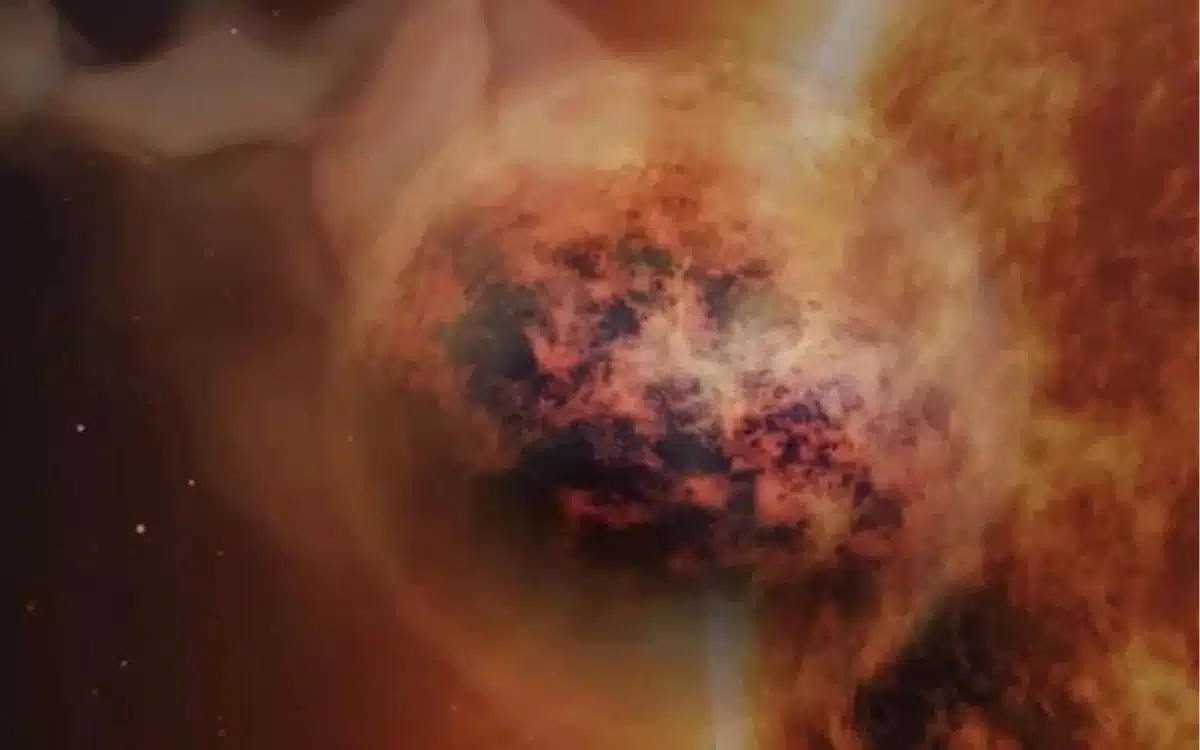NASA telescope reveals ‘candyfloss’ planet where it rains sand
- A NASA telescope has revealed a ‘candyfloss’ planet
- It was found 200 light-years from Earth James Webb Space Telescope
- It has a poisonous atmosphere, smells of sulphur dioxide and rains sand
Published on Dec 01, 2023 at 9:04 PM (UTC+4)
by Amelia Jean Hershman-Jones
Last updated on Dec 20, 2023 at 2:20 PM (UTC+4)
Edited by
Alessandro Renesis
A NASA telescope has revealed a ‘candyfloss’ planet – but it’s not as fun as it sounds.
In fact, the newly discovered ‘candyfloss’ planet rains sand.
While it might look delicious this fluffy ‘candyfloss’ planet found 200 light-years from Earth has a poisonous atmosphere.
READ MORE! NASA’s wacky-looking Super Guppy could be the reason humans are able to get back on the moon
What’s more, it rains sand as well as having scorching temperatures, raging winds and smelling of sulphur dioxide.
The large planet’s official name is actually WASP-107b.
To put its size into perspective it’s 30 times bigger than Earth.
It lies in in orbit around a star in the constellation of Virgo.
The constellation can actually be seen in the night sky.

But rather than just gazing at it, for the first time NASA’s James Webb Space Telescope (JWST) has revealed detailed info.
And, with an atmosphere containing – poisonous sulphur dioxide, water vapour and clouds of sand – it’s not somewhere to head for a holiday.
As this astronaut revealed, even in the best of cases, time in space can have an impact on you.
And the photos of these two identical-twin NASA employees is proof of that.
Back to the NASA telescope findings.
“We are unravelling new worlds,” astronomer and one of the authors of a study at CEA, Dr Achrene Dyrek, said.
She explained that the JWST was allowing scientists to learn more about planets we’ve never seen before.
The ‘candyfloss’ planet was actually first discovered in 2017.

And its fluffiness was one of the planet’s first things scientists noticed.
And this quality of the ‘candyfloss’ planet is what allowed astronomers to look around 50 times deeper into its atmosphere than other similar-sized planets.
Even ones that are much closer and in our own solar system – like Jupiter.
Speaking of closer to home, it’s been a big year for space discoveries within our own solar system.
Footage of Martian landscapes emerged as well as actual samples of an asteroid being captured.
Back to the ‘candyfloss’ planet and WASP-107b orbits a star that is, in fact, cooler than our own Sun.
As a result it produces fewer high-energy photons that are responsible for chemical reactions.
Despite this lack of photons, the fluffy atmosphere surrounding the ‘candyfloss’ planet means they can still get into the atmosphere.

This allows chemical changes to happen.
“The discovery of clouds of sand, water, and sulphur dioxide on this fluffy exoplanet is a pivotal milestone,” the study’s lead author from KU Leuven, Leen Decin, said.
“It reshapes our understanding of planetary formation and evolution, shedding new light on our own Solar System.”
And it’s hoped these discoveries keep coming as the US heads back to the moon.
NASA has also generated enough oxygen to sustain a human on Mars.
Keep your eyes on the skies – and checking in here – for more information as it’s discovered.
DISCOVER SBX CARS: The global premium car auction platform powered by Supercar Blondie

All Supercar Blondie contributors undergo editorial review and fact-checking to ensure accuracy and authority in automotive journalism. After gaining her BA Hons in French and English at the University of Nottingham, Amelia embarked on a vocational diploma from the National Council for the Training of Journalists (NCTJ). This led to numerous opportunities, from interning at Vogue to being on the small team that launched Women’s Health magazine in the UK, which was named the PPA Consumer magazine of the year for three years running. As Health, Beauty and Fitness editor, Amelia personally received a Johnson & Johnson Award and was shortlisted for both PPA and BSME titles. Since then, Amelia has created content for numerous titles and brands, including the Telegraph, 111 Skin, Waitrose, Red magazine, Stylist, and Elle, as well as being Head of Content at Vitality and Editor in Chief at INLondon magazine. “My superpower is translating technical jargon about the mechanical workings of a supercar into a relatable story you’ll want to share with your friends after you’ve read it.” After joining the SB Media family as a senior journalist in September of 2023, Amelia’s role has evolved to see her heading up the SEO output of the editorial team. From researching the most ‘Google-able’ key terms to producing evergreen content - it’s been a time of hard work, growth, and success for the editorial team and the Supercar Blondie website. “I like to think of myself as a ‘method journalist’. In other words: I live and breathe whatever I am writing about. When writing about fitness, I trained as a personal trainer, and as a beauty editor, I completed an ‘expert’ in scent diploma with the Fragrance Foundation. “During my tenure at Supercar Blondie, however, I did something I never thought possible: I passed my driving test at the age of 36. One day I’d love to train as a mechanic to better understand what happens under the hood, too. “My sweet spot is providing readers with a ‘takeaway’ (read: something new they didn’t know before) after reading every one of my stories. While I don’t claim to be an expert in the automotive world, I know the experts and bodies in the field to rely on to provide our readers with an informative and thought-provoking story every time they visit the site.”





